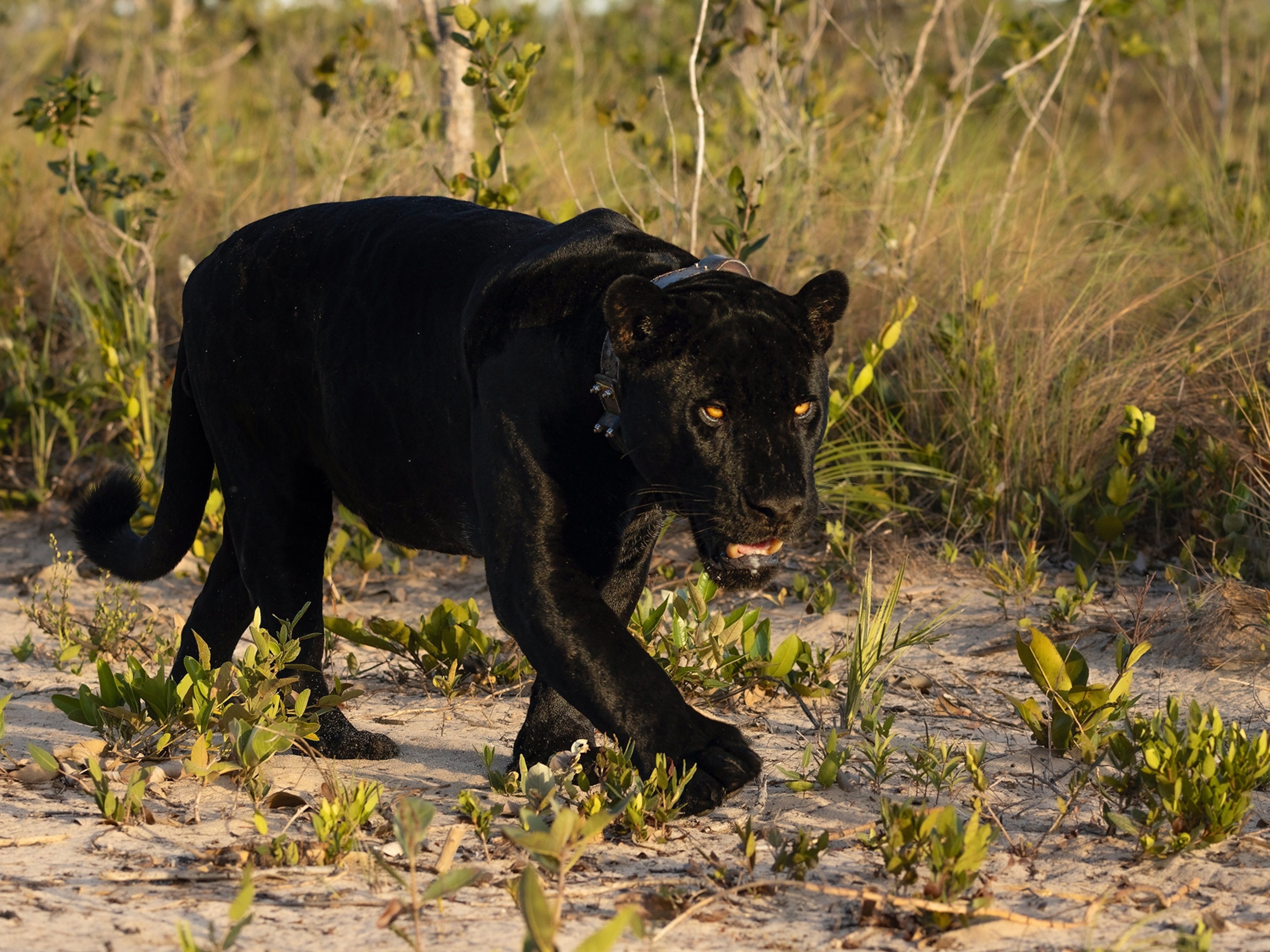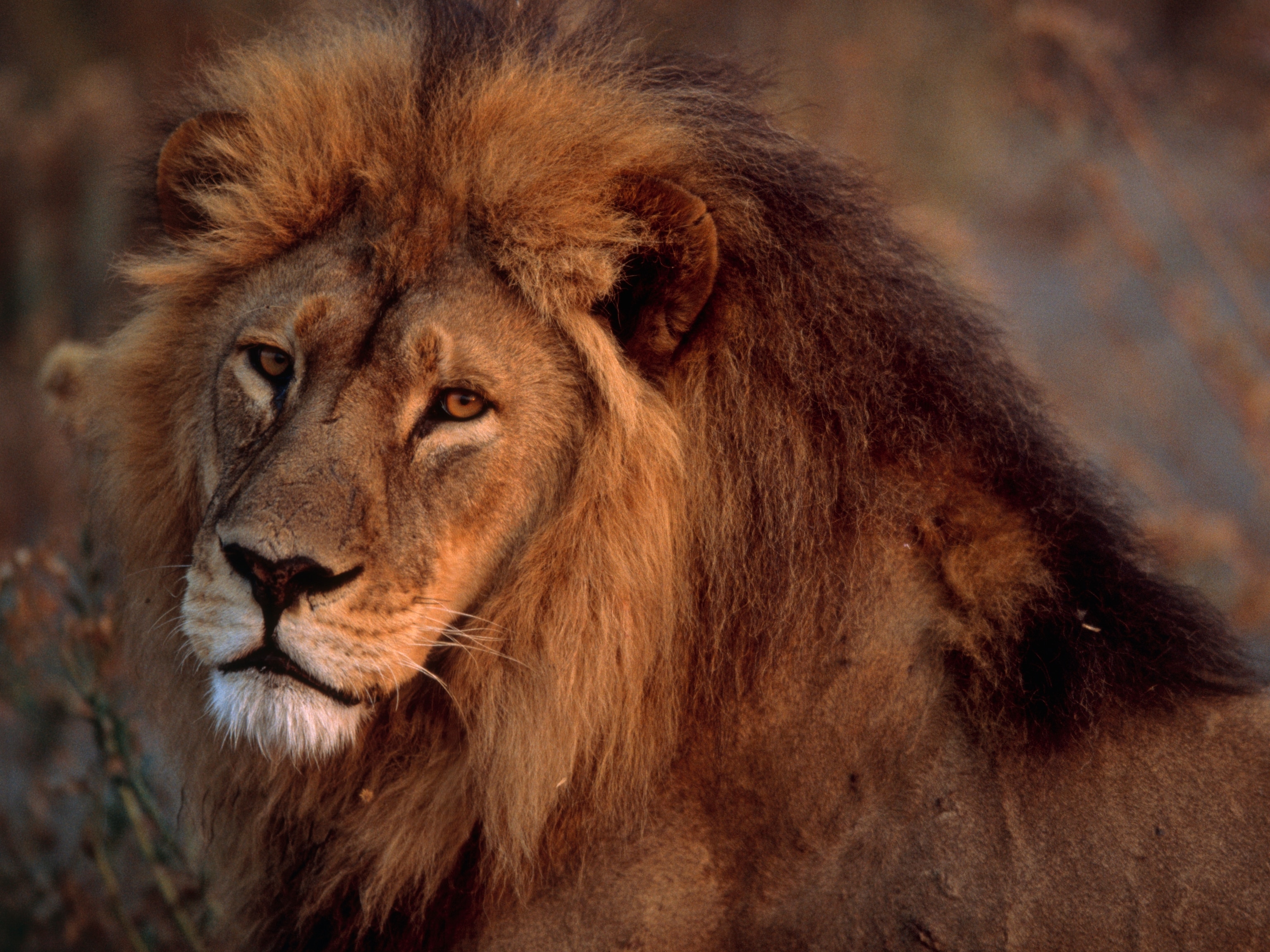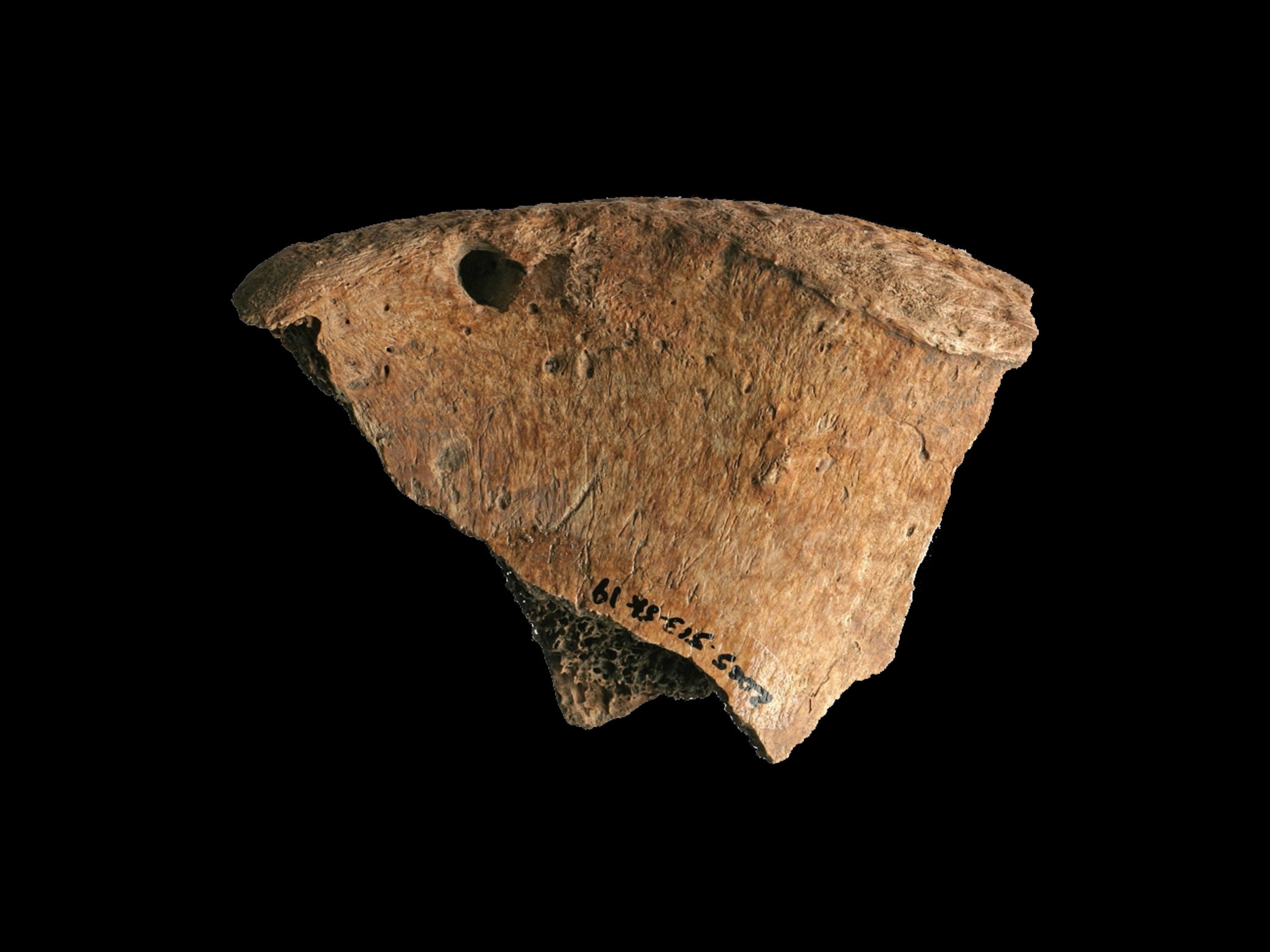6 Nat Geo Photographers Share Their Favorite Wild Cat Moments
From a newborn tiger cubs to a bittersweet goodbye between man and mountain lion, see the experiences that stuck.
Every photographer has a special moment in the field that stays with them forever.
For those lucky enough to work with wild cats, that snapshot in time can be even more amazing.
In honor of Big Cat Week, National Geographic caught up with six photographers to ask them about their most memorable experiences in the wild, from the rain forests of India to the savannahs of the Serengeti.
Steve Winter

You can’t publish a big cats story without a mom with cubs. When I was photographing [Bengal] tigers in India, two mothers and their five cubs were killed in the first 10 days I was in the field. It was so sad that the world lost seven tigers, and after photographing on the reserve for three months I returned home. Before leaving I asked the director to please email me if one of the pregnant females gave birth. I just could not give up. Six weeks later the email came. (Read “How Many Tigers Are There Really? A Conservation Mystery.”)
Back in the field one day turned into two, and one week turned into three, and I just did not see the cubs. On the 24th day I was so stressed out about having only four more days to get the shot. As I watched mom in the distance just after dawn, I saw the ear of a cub! I put my eye up to my camera with the 600mm and shot about five frames. I looked up and no cub! I asked the anti-poaching patrol ranger, ‘Did the cub come out?’ He said yes, but because of the stress of not getting the shot for over three weeks, it took me two hours to finally look at the back of the camera and see what I had taken.
When I did I cried like a baby, as this is what I saw—one frame out of five was perfect. This became one of my favorite images of all time and the cover of the National Geographic Tigers Forever book, written by my wife Sharon Guynup. This image represents the future of tigers— the most endangered of the big cats.
Amy Toensing
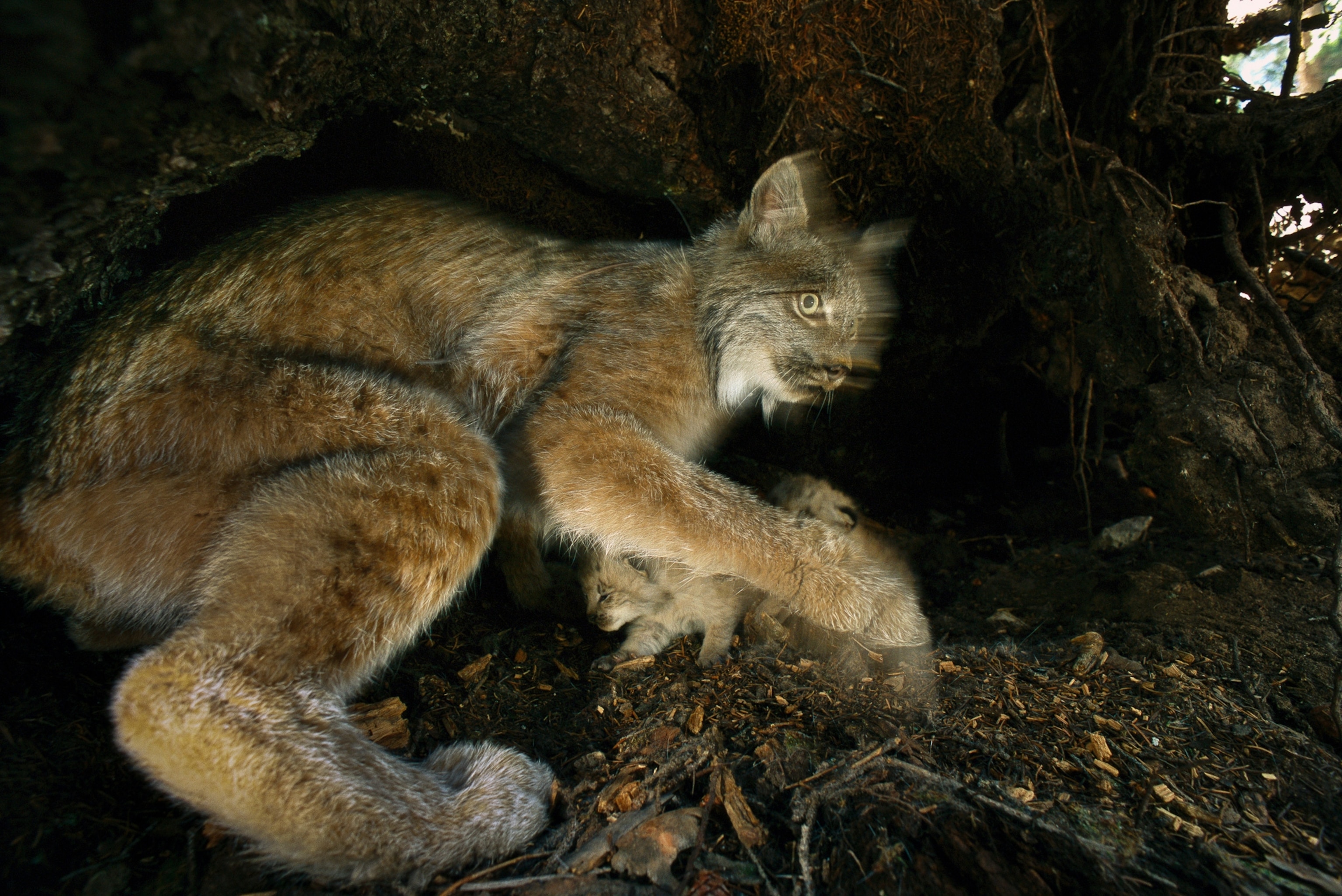
I’m usually a people photographer, so when I was assigned to work on a story about [Canada] lynx I was excited—I mean, who doesn’t love a big furry cat? The story was about a program reintroducing lynx to Colorado where the charismatic cats had once roamed.
There were so many amazing moments, but one stands out. I followed biologists to a den of a mama cat where she had given birth to a litter of the tiniest, cutest little critters you could ever imagine. As the biologists approached the mama cat fled, but stayed only a few hundred feet away, keeping an eye on her kittens.
As the biologists took stats on the kittens and implanted microchip IDs, my assistant and I worked quickly to set up our remote cameras and lights so we could capture the moment the mama returned to her litter. We finished quickly and ran to a distance that wouldn’t interrupt the reunion.
As the video screen glimmered to life we watched the mama nuzzle each of her kittens, checking to make sure they were OK. I pressed the shutter and captured her as she checked on her first kitten. I love how this shot shows her large hind feet that work like snowshoes, supporting her as she crosses the snowy landscape.
Charlie Hamilton James
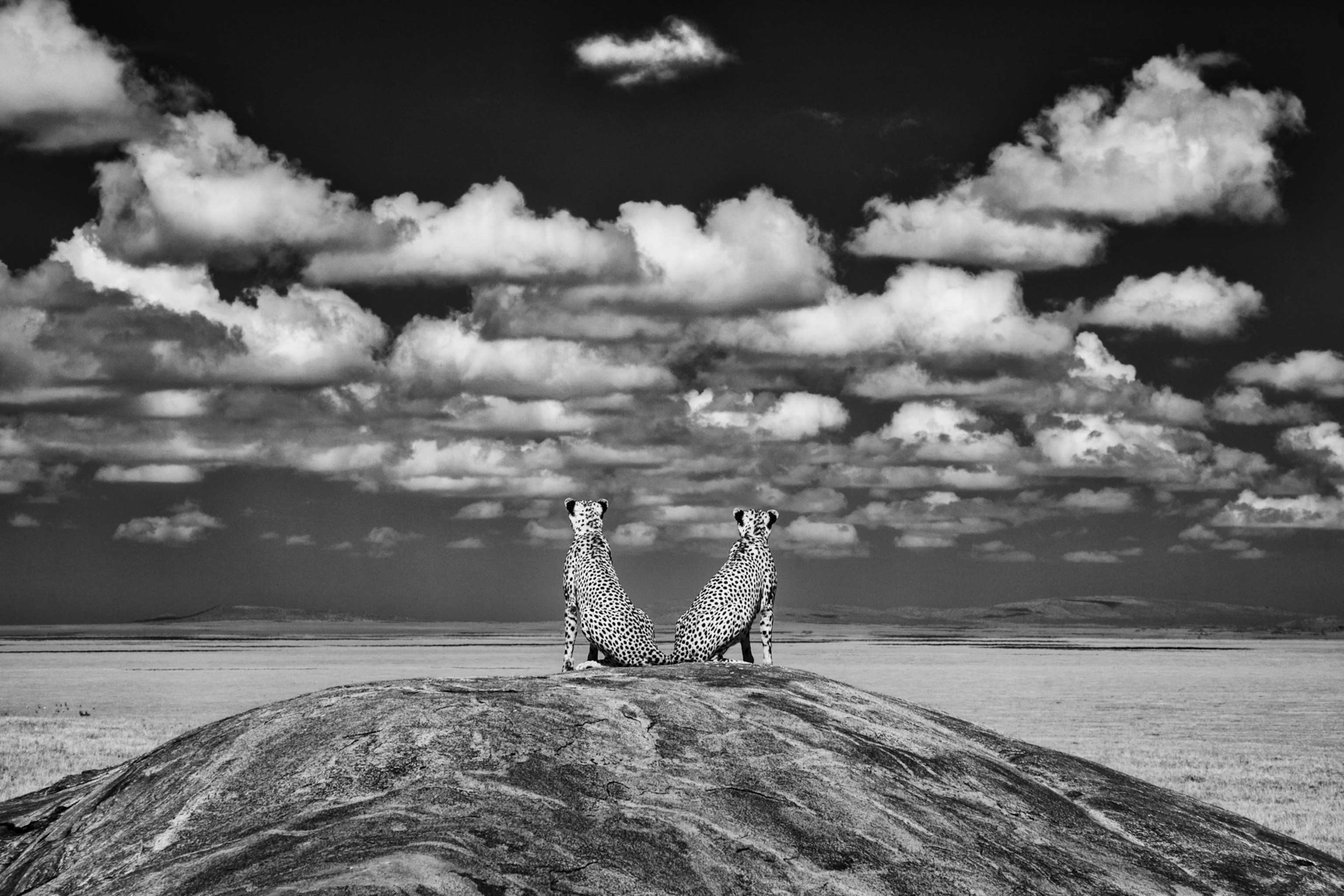
I was filming lions in Serengeti National Park a few years ago. Most mornings we would drive around an area called Gol Kopjes looking for the pride to film. On one particular morning we came upon these two cheetahs. They were relaxing on a rock, which gave them a good vantage point to look for prey. As we were concentrating on finding lions, we didn't stay with them for very long, but the scene was nice with the vista behind and the fluffy clouds. Whenever I’m filming I always keep a still camera set up with me and in the bag I had an infrared converted camera.
I took a few shots of the cheetahs, and at that moment they both sat up and formed an almost perfect symmetry. I snapped like crazy and composed them right in the middle of the frame. The formation of the clouds above them was totally serendipitous—almost as symmetrical as the cheetahs.
The brief moment was over and the cheetah lay back down. I looked with my binoculars to see what they had been looking at. Way off in the distance, I could see a lone lioness walking across the plain. I said goodbye to the cheetahs and set off after the lion that they had spotted for me. (Related: “How a 'Cheetah Matchmaker' is Helping Save the Big Cats.”)
Nick Nichols

Imagine planning a project for five years. I did this while getting ready for the Serengeti Lion. You have hopes and dreams, but they’re just that. Ecologist Craig Packer had advised me and my editor Kathy Moran to choose a remote corner of the Serengeti to work in because it was away from the tourist center of the park. Craig was also adamant we photograph lion prides of different habitats. Real estate is everything with lions.
The first day I would see lions I was taken on a tour by Daniel Rosengren of The Serengeti Lion Project. He was giving me an overview of all the study’s prides I could reach from my remote camp. Daniel wanted to end with the Vumbi Pride, which was a plains pride near our camp.
When we found the Vumbi, they were starving and thin. Five adult females and nine tiny six-month-old cubs were sleeping on an almost imperceptible rise, and the adult females had formed the spokes of a wheel facing all directions. At dusk one female rose up and started trotting away. The pride with cubs in tow followed at a slower trot. We followed even slower not wanting to disturb.
When we arrived the females had surrounded a hole and one was digging with dust flying. This continued with intense energy and anticipation. We (me, Nathan Williamson the videographer, and my wife and spotter Reba Peck) stayed a reasonable distance, and with the cars motor silenced, the wind was howling so much the car was shaking. I was shaking as well, knowing a warthog meal was in the hole.
There is no morality in the wild. When the warthog finally came out, it was chaos and screaming as the pride got enough food to live another day. The image, made on my first day, came to represent lions for me. I never came close to making something with more energy in the over two years that would follow. (See 15 intimate portraits of lions.)
Joel Sartore

Years ago, in the Bolivian Amazon, we were sitting in a light rain when a jaguar entered a clearing, not 30 feet away. She was bright orange, weighed 150 pounds, and to this day is the only wild cat I've ever seen. (See “Rare Jaguars Caught in Camera Traps—for Science.”)
I could hear her breathing, but she didn’t make a sound with her feet. Not one leaf crunched, nor single twig snapped. It was as if she was walking on air.
I whispered to my guide, 'How is that possible?' He said that for cats, stealth is everything. They’re ambush hunters, so if they can't learn how to move through their world unnoticed, they’d soon starve. (Read more about Sartore’s challenging fieldwork in Madidi.)
She turned and glowered at us. Like the ticks and cuts she bore, we were irritating to her.
She walked on, completely silent, and unforgiving, I assume.
David Chancellor
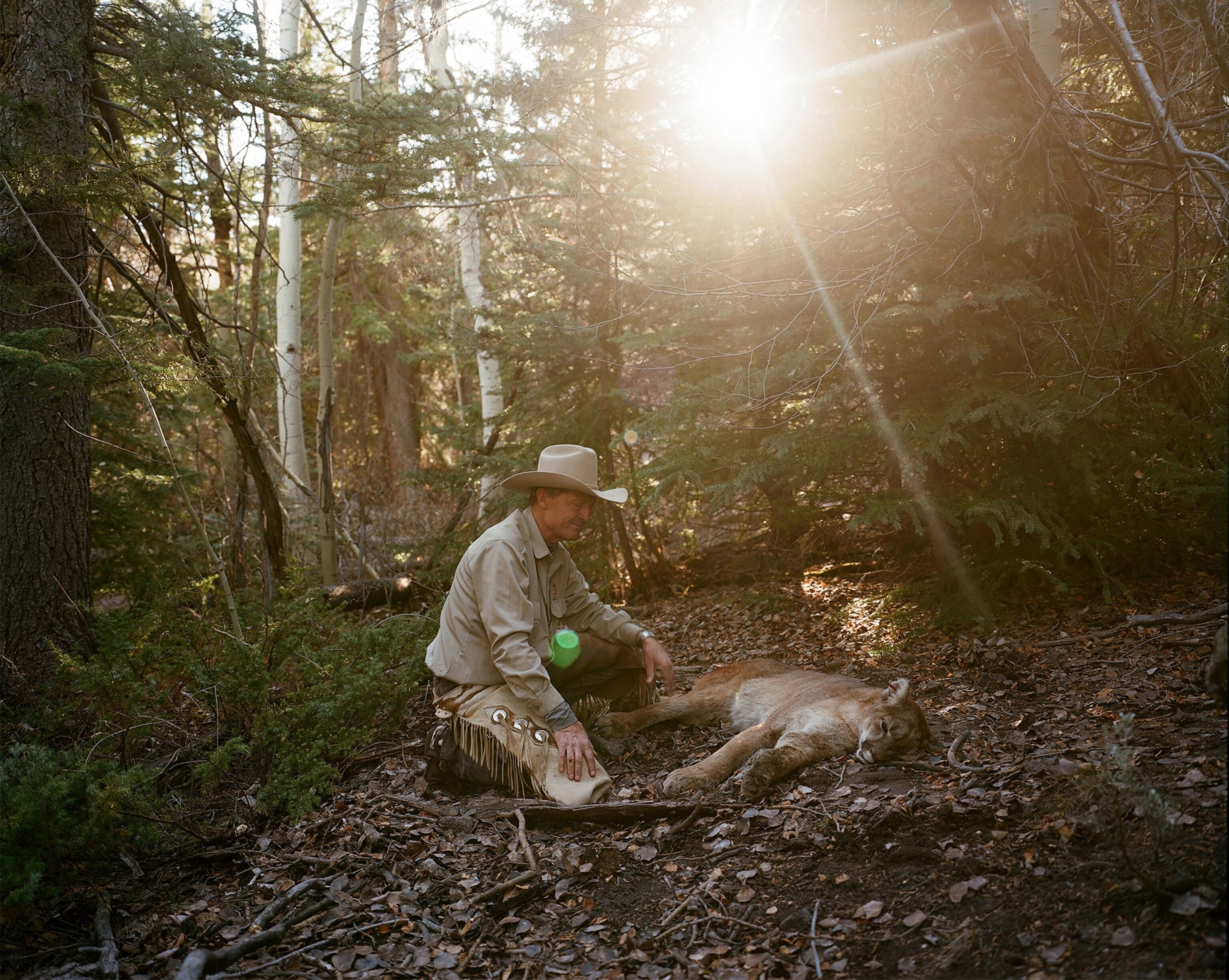
Over 30 years, Clint Mecham, a predator specialist from the State of Utah Department of Natural Resources, has collared more than 400 mountain lion, monitoring the health and population of the species.
This is No. 53, a veteran of the group, who’s played a major role in the study for more than 14 years. Now that the study is coming to a close, the female lion will be released without a collar for the first time in her adult life. It’s also the last time Clint will see this lion alive. Shortly after its release, Mecham was notified by conservation officers [that No. 53 had been killed as a trophy].
What I found interesting about this particular lion and this particular gentleman was the extraordinary history that they shared. For the entire 14 years she’s been in continual combat with Clint. Each time a collar has needed changing, it’s fallen to Clint to undertake the task, and the lion has made her feelings known with tooth and claw.
This time was somewhat different. (Read about why cougars are coming to town.)
The lion was calm and almost accepting of Clint; it’s as if she knew her time was up and the collar would not be refitted. Clint also knew all too well that the collar perhaps offered her a small amount of safety.
There was a bond here, an understanding between two warriors…now was the time to say goodbye.
Jessie Wender is a senior photo editor for National Geographic. You can follow her on Instagram.




